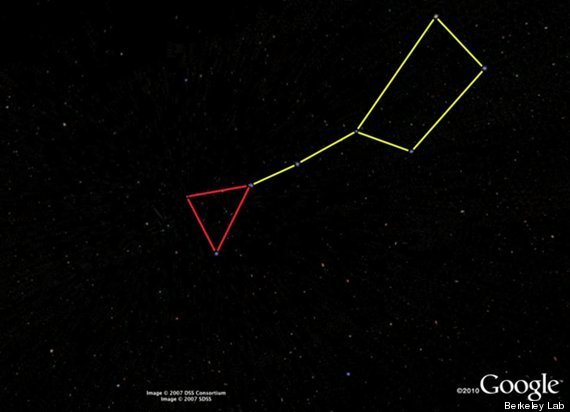Last month, scientists at the Lawrence Berkeley National Laboratory in California discovered what they think could be the youngest -- and closest -- supernova in decades, leading UC Berkeley's Joshua Bloom to call it "the supernova of a generation."
The supernova, which is essentially an exploding star, has been named PTF 11kly. And even though it exploded in the Big Dipper, 21 million light-years away in the Pinwheel Galaxy, you might just get to see it over the next few weeks.
The Huffington Post spoke to Peter Nugent, a senior scientist at the Berkeley Lab who was the first to discover the supernova, who gave us some tips about how best to view the supernova.
Equipment -- What You'll Need:
Well, that depends on where you live.
If you live in the dark countryside, Nugent suggests using binoculars with a magnification of at least 20 and a diameter of at least 80. (The first number is magnification and the second is diameter, so binoculars that measure 20x80 or 25x100 would work.)
"But if you're anywhere near the city, you'll want a six- to eight-inch telescope," Nugent said, referring to the diameter of the refractor mirror on the telescope. "Nothing fancy. Nothing high-end," he added.
Nugent said not to worry if you miss it when it reaches peak brightness on September 9, saying that the supernova will be visible for a couple weeks.
But since September 12 is a full moon, it's best to wait until the following day. Then, right at sunset, before the moon comes up and the big dipper is at its highest point, it's time to break out the binoculars or telescope.
"The easiest way to find it," says Nugent in a video released by the Berkeley Lab, "is to take the last two stars in the handle of the big dipper, form an equilateral triangle heading north, and bang, you'll find the Pinwheel Galaxy."
Because PTF 11kly is so far away, it takes time for the light from the explosion to reach the telescopes. The images below, which were taken on August 23, 24 and 25, show the supernova first appearing and then getting brighter over a three-day period.
Have you been able to see the supernova? Let us know in the comments, or submit pictures and video using the Send Photos/Videos link below.

Support HuffPost
Our 2024 Coverage Needs You
Your Loyalty Means The World To Us
At HuffPost, we believe that everyone needs high-quality journalism, but we understand that not everyone can afford to pay for expensive news subscriptions. That is why we are committed to providing deeply reported, carefully fact-checked news that is freely accessible to everyone.
Whether you come to HuffPost for updates on the 2024 presidential race, hard-hitting investigations into critical issues facing our country today, or trending stories that make you laugh, we appreciate you. The truth is, news costs money to produce, and we are proud that we have never put our stories behind an expensive paywall.
Would you join us to help keep our stories free for all? Your contribution of as little as $2 will go a long way.
Can't afford to donate? Support HuffPost by creating a free account and log in while you read.
As Americans head to the polls in 2024, the very future of our country is at stake. At HuffPost, we believe that a free press is critical to creating well-informed voters. That's why our journalism is free for everyone, even though other newsrooms retreat behind expensive paywalls.
Our journalists will continue to cover the twists and turns during this historic presidential election. With your help, we'll bring you hard-hitting investigations, well-researched analysis and timely takes you can't find elsewhere. Reporting in this current political climate is a responsibility we do not take lightly, and we thank you for your support.
Contribute as little as $2 to keep our news free for all.
Can't afford to donate? Support HuffPost by creating a free account and log in while you read.
Dear HuffPost Reader
Thank you for your past contribution to HuffPost. We are sincerely grateful for readers like you who help us ensure that we can keep our journalism free for everyone.
The stakes are high this year, and our 2024 coverage could use continued support. Would you consider becoming a regular HuffPost contributor?
Dear HuffPost Reader
Thank you for your past contribution to HuffPost. We are sincerely grateful for readers like you who help us ensure that we can keep our journalism free for everyone.
The stakes are high this year, and our 2024 coverage could use continued support. If circumstances have changed since you last contributed, we hope you’ll consider contributing to HuffPost once more.
Already contributed? Log in to hide these messages.



